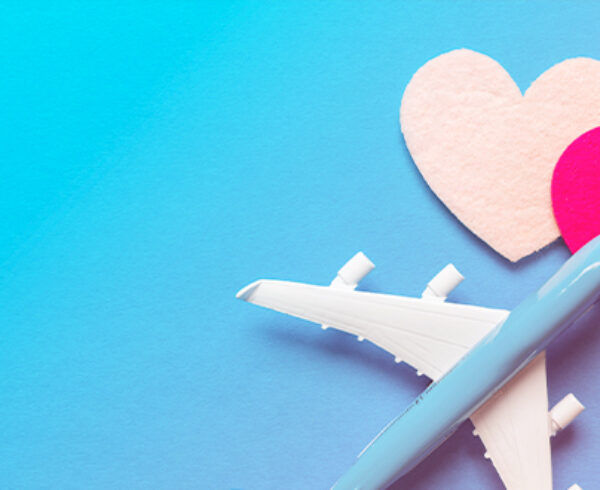When doing business internationally, your mastery of global etiquette can mean the difference between success and failure. But travel etiquette varies from continent to continent, country to country, and even city to city in many cases.
You can’t be expected to know the ins and outs of every single place you might visit. If you’re often working in Singapore, the United Kingdom or Saudi Arabia, it’s definitely worth investing time and energy into understanding those cultures and the appropriate travel etiquette in each.
But, if your work takes you to difference places on a regular basis, there are 3 main travel etiquette categories you should focus on. Read on to learn more about those 3 important categories, and quickly become a master of global etiquette.
1. Greetings and Other Social Interactions
When you travel internationally for business, you can rest assured you’ll have to tell someone “hello” eventually. But simple greetings are approached in different ways around the world.
Greetings in Spain include a kiss on each cheek, but it’s important to start with the right cheek.
For example, in much of Europe and Latin America, cheek kisses are an accepted (and expected) part of greetings. Unfortunately, there are variations of the kiss greeting used in many countries.
In France, people greet each other with a kiss on each cheek, known as “la bise” — sometimes up to four kisses depending on location and how familiar you are. Greetings in Spain include a kiss on each cheek, but it’s important to start with the right cheek. In the Netherlands, three kisses are typically exchanged — but only between friends and relatives. In the United Kingdom, it’s rare to see the kiss greeting at all.
To be safe, do a little bit of research before traveling to a country that’s new to you. To be doubly careful, ask a co-worker or colleague who’s done business in that country what type of greetings they’ve typically encountered or used.
Greetings in different countries may also involve firm handshakes, bows, trading business cards, exchanging gifts or even the taking off of shoes. Again, a little bit of research ahead of your travels will go a long way.
2. Dining Customs and Behavior
Dining together is another important part of doing business, both at home and abroad. But, as you can imagine, people in different countries have different traditions when it comes to mealtime.
Start by understanding how a certain country approaches time. For example, in Italy, the concept of time is less linear, and it’s not unusual for people to be late for meetings and meals. The same holds true in Argentina, where you may find colleagues arriving well after the appointed time. That is not the case in Germany, where punctuality is of the utmost importance.
 Brush up on a country’s socially acceptable dining practices, too. For example, the Chinese rarely entertain in their homes. Business dinners often take place in the private dining rooms of fine restaurants — and hosts order for their guests. In Argentina, dinners often take place in the home — and stretch on for hours and hours.
Brush up on a country’s socially acceptable dining practices, too. For example, the Chinese rarely entertain in their homes. Business dinners often take place in the private dining rooms of fine restaurants — and hosts order for their guests. In Argentina, dinners often take place in the home — and stretch on for hours and hours.
When in Germany, be sure to place your hands on the table where they can be seen, as it is socially taboo to hide your hands in your lap. And in the United Kingdom, always say “yes” when offered tea, and fit in with your colleagues by putting milk into your cup last.
When dining in foreign countries, spend time looking around and observing what your hosts are doing. If you go slow and pay attention, it’s likely you can pick up on most of the socially acceptable practices.
3. Blend in with Proper Attire
You’ll also want to dress appropriately for the country you’re visiting — and your fashion decisions should be driven by much more than just the weather.
The United States has trended toward a more relaxed and business casual dress code for many years. This is especially true at agencies and other businesses that do creative work. That’s not the case in all countries around the world, though.
In countries like Spain and Italy, men are expected to wear suits, and the quality of the suit will be a part of the first impression someone makes. Argentina, Brazil and Egypt are among the other countries where suits and more conservative attire are the norm. In the United Arab Emirates, dressing too casually may offend your hosts.
Throughout Europe, women can feel safe wearing pantsuits in places where more formal business attire is expected. In business casual settings, tailored pants and pencil skirts are good fits paired with a poplin blouse or a similarly stylish top. Avoid flashy or dangly jewelry.
In places that are more conservative, like India and the United Arab Emirates, women may wear pantsuits and skirts — as long as those skirts reach below the knee. High-necked dresses are also suitable in conservative areas, as long as they aren’t too formfitting.
You’ll find more casual attire in the United Kingdom and Israel, where it’s not unusual to find a “business casual” dress code that closely mirrors what you see in the United States. In these countries, the workforce at large may dress more casually while executives wear suits. That is not the case in the Netherlands, where executives attempt to fit in with everyone else by dressing similarly. For women, business casual means you can ditch the heels — but don’t go so far as to wear sandals.
The season may also affect standards for attire. While South Africans typically wear suits to work, they may leave behind their jackets and ties during summer (which is during winter in the United States).
Do some investigating into how certain countries typically dress for work before you leave. Given that inappropriate dress can lead to offense in some countries, this is one area where you’ll want to be fully prepared. We recently wrote another post about business culture and etiquette around the world, which provides some additional tips.
Travel Smart With JTB Business Travel
We often share global etiquette tips through the JTB Business Travel blog, which is full of helpful insights and tips for executives, travel managers and travelers themselves. Check out our blog when you need travel etiquette help, and get in touch with us if we can help you get more out of your business travel.
To help your company get a higher return on its investment in business travel, click here.














Leave a Comment